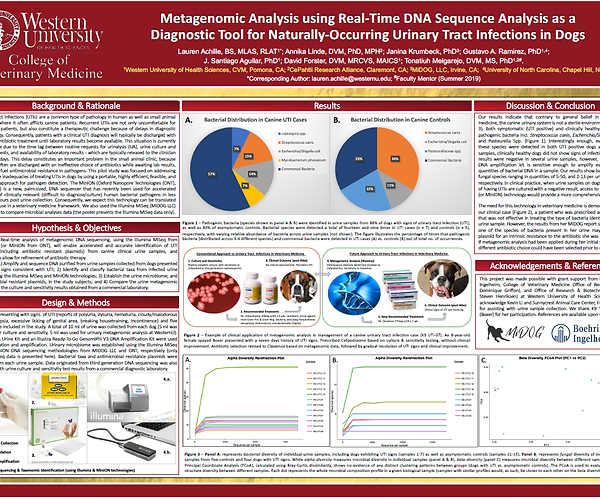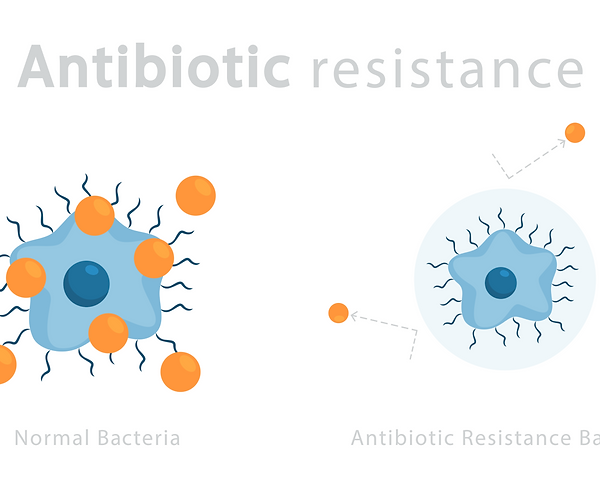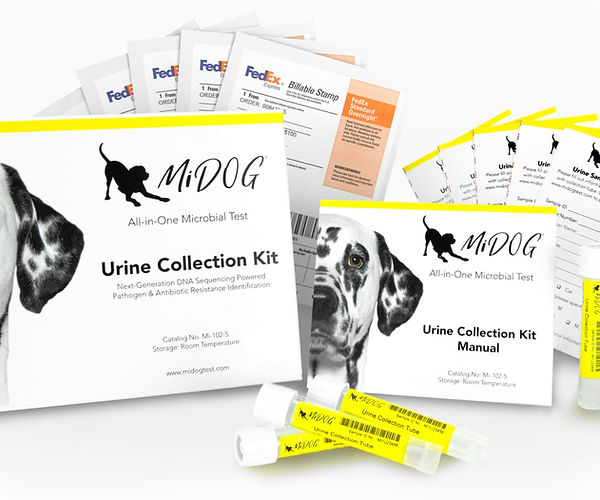If you notice your furry friend wincing from pain while urinating, they could be suffering from a common pathogen-related disease called a urinary tract infection (UTI). A pathogen is any bacterium, virus, or other microorganisms, undetectable by the naked eye, capable of causing disease. A urinary tract infection is a common disease that can be contracted by both human and small animal patients.
This type of infection typically originates when germs infect parts of the urinary system, typically the urethra and bladder, which creates havoc inside what is normally a healthy urinary microbiome. The urinary microbiome refers to the microscopic organisms (also called “microbes”) that reside in the urinary tract. These microscopic organisms form communities that play a major role in maintaining a healthy and balanced system.
UTI Symptoms
An animal suffers from a UTI when healthy and clean urine in the bladder is invaded by harmful, foreign bacteria that reproduce and create new populations inside the bladder. Urinary tract infections cause a significant amount of pain until the infection is treated with antibiotics to eliminate the infectious microbes. Patients with UTIs can exhibit symptoms including cloudy urine, excessive thirst/drinking, excessive licking of the genital area, breaking housetraining, and urinary incontinence (uncontrollable leaking of the bladder). Recurrent UTIs not only cause discomfort for patients, but they also pose a therapeutic challenge.

If your dog breaks housetraining and suffers urinary incontinence, they may have a UTI. ,a
UTI Treatment
If a patient is expressing signs of a urinary tract infection, the next step is for the veterinarian to prescribe an antibiotic treatment plan. Antibiotics target the specific foreign bacteria that are causing the infection, however, determining the most effective antibiotic treatment is not always as easy as it seems since the microbes causing the infection can vary from patient to patient. Although there are common bacteria that cause UTIs, it is typical for other bacteria to also be present which can exacerbate the infection and lead to a more complicated diagnosis.
Diagnostics
To determine the source of the infection, the common and traditional diagnosis method is to perform a culture and sensitivity test. With this type of test, a urine sample is collected from the patient and taken to a laboratory where the bacteria are cultured (grown and allowed to reproduce). After identifying the specific types of bacteria present in the urine sample, the bacteria are presented against various types of antibiotics to determine an effective treatment plan.

A collaboration with Western University has helped unveil the clinical importance of using MiDOG technology to diagnose naturally occuring UTIs in dogs.
Since there is an inevitable lag during the diagnosis period while veterinarians determine the source of the infection, patients are usually discharged with a general antibiotic treatment targeting common bacteria present in UTIs to provide immediate relief of pain for the patient. The laboratory results typically become available within 3-5 days, however, if the types of bacteria in the UTI are misdiagnosed, the patient is subjected to an ineffective choice of antibiotics which could result in the development of antibiotic resistance and a long, painful recovery. Antibiotic resistance occurs when bacteria develop resistance mechanisms to survive antibiotic treatments that were once effective in treating the infection. One mechanism that gives bacteria their antibiotic resistance properties is through antibiotic resistance plasmids which contain the antibiotic resistance genes. These antibiotic resistance plasmids can be transferred amongst a population of bacteria which poses a major threat to us and our pets since it hinders the animal’s ability to defend themselves against the invasive microbes and contributes to the pathogen’s ability to reproduce and spread.

MiDOG technology helps detect antibiotic resistant bacteria.
Better Patient Care
To optimize patient care and accurately identify the specific microbes affecting an animal’s health, scientists at MiDOG LLC created a new microbial DNA sequencing-technology that identifies the presence and composition of microbes in patient samples. The scientists demonstrated how microbial DNA sequencing has provided veterinarians with a method for targeted diagnosis of pathogen-related diseases. MiDOG’s sequencing technology has allowed for rapid identification of pathogenic microbes in less than two hours after the collection of your pet’s urine sample.
This has revolutionized the ability of veterinary medicine to accurately diagnose and treat canine bacterial and fungal infections. In a collaborative case study led by scientists from MiDOG LLC and researchers from the College of Veterinary Medicine at Western University, the types of bacteria present in UTI positive and healthy dog urine samples were identified and compared using two methods: MiDOG’s modern microbial DNA sequencing method and the traditional culture and sensitivity method.
Establishing the Urinary Microbiome
Using MiDOG’s microbial DNA sequencing technology, the urinary microbiome was established, and the test identified the different types of microbes including bacteria, fungi, and antibiotic resistance plasmids. In both the UTI positive group and the healthy group of dogs, shared types of pathogenic bacteria were observed in the dog’s urinary system. Although the urinary microbiomes of both the UTI positive and healthy groups contained some of the same types of pathogenic bacteria, only the UTI positive group expressed UTI symptoms.
For the culture and sensitivity test, the results were negative for several of the urine samples even though MiDOG’s test showed positive results indicating the presence of pathogenic bacteria. This demonstrates how MiDOG’s DNA sequencing methodology has high sensitivity detection abilities and can determine the presence of less abundant microbes which enables veterinarians to prescribe a more personalized and targeted treatment plan. If a dog was expressing UTI symptoms but their urine sample was determined negative for common pathogenic bacteria using the culture and sensitivity test, the MiDOG DNA sequencing technology could provide a more comprehensive analysis.
Modern DNA Sequencing Technology
MiDOG’s modern DNA sequencing technology for microbial detection gives our pets a second chance. This is clearly seen in a notable clinical case where a canine patient was prescribed an antibiotic based on the type of bacteria that was identified in her sample using the culture and sensitivity test. However, even after antibiotic treatment, she did not show signs of improvement.
When her sample was analyzed using the MiDOG test, the bacteria present in her urine was identified to contain an antibiotic-resistant plasmid which enabled the pathogenic bacteria to defend themselves against the prescribed antibiotic. Unlike with MiDOG’s test, the antibiotic-resistant plasmid was not detected with the culture and sensitivity test since the test was only equipped with detecting the presence of the bacteria and was not equipped to detect antibiotic-resistant plasmids inside the bacterial population. After the prescription was modified to account for the antibiotic-resistant bacteria, the patient’s UTI symptoms subsided.
If MiDOG’s technology did not exist, the antibiotic-resistant bacteria may have never been detected and the bacteria in the UTI infection would remain unconstrained and could spread to other parts of the body, leading to fatal consequences. This case highlights why MiDOG’s accurate methodology for rapid pathogen detection is necessary for a proper diagnosis and is critical in saving time and saving lives. The ability of MiDOG’s test to expedite the diagnosis and treatment process for these types of microbial infections means less time spent at the vet and more time spent at home with happy, healthy critters.

The MiDOG Urine Collection Kit is a useful tool to help diagnose your dog’s urinary infection.
Learn more about the MiDOG Test
Categories: Dogs, Urinary Tract Infection (UTI)

